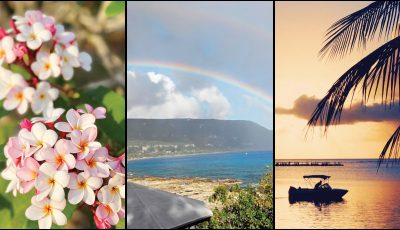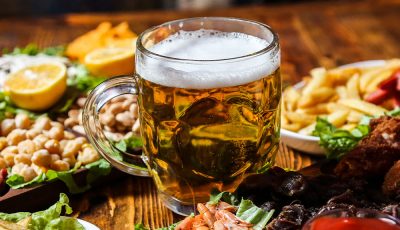Travel bubble starts in Jan.
Torres shares CNMI’s success in fighting COVID-19 with Rotary Club of Guam
Gov. Ralph DLG. Torres expects the partial resumption of tourism from South Korea to the CNMI under a “travel bubble” program that will start next month, January, even as the Marianas Visitors Authority greenlit the program.
Torres disclosed this during an on online speech before the Rotary Club of Guam, while sharing with club members the CNMI’s success in fighting the spread COVID-19 in the community.
The MVA board, meanwhile, unanimously approved E-Land Group of Companies’ proposed plan to carry out the travel bubble in the CNMI with the first batch of tourists expected to arrive on Jan. 8 via a charter flight.
A “travel bubble” is an exclusive arrangement between two countries or destinations, typically between areas with a low number of COVID-19 cases, wherein citizens of both jurisdictions can travel between the two areas for tourism purposes.
Invited to speak yesterday before the Rotary about the CNMI’s situation during this pandemic, Torres said the CNMI continues to work on reopening its tourism industry through a travel bubble agreement with source markets such as South Korea and Japan. He said the CNMI, however, remains cautious to ensure that any resumption of flights puts the health and safety of the CNMI people first.
“This can be done, but it must be done through thoughtful and deliberate decisions and cooperation with all stakeholders—our health care officials, first responders, and our tourism industry leaders working together to keep our people safe,” Torres said.
With the collaboration that has been developed throughout this crisis, and with months of careful consideration, planning, and needed caution from the Marianas Visitors Authority, the COVID-19 Task Force, and the Commonwealth Healthcare Corp., Torres said he is excited to see the resumption of tourism from South Korea this January.
He said this will be a “new normal” for the industry, one that will change the way the CNMI operates, with new requirements aimed at keeping residents safe as they go back to their jobs, and a level of normalcy that has been disrupted in these trying months.
MVA share
It was learned at the MVA board meeting yesterday that, as per the travel bubble arrangement with E-Land, the CNMI promises to allocate $55,000 for this initiative, which will only be drawn down if E-Land fails to fill its charter flight with 100 passengers.
MVA member Ivan Quichocho entered the motion to support E-Land’s travel bubble and to the cost-share requirement. “None of the monies from the MVA commitment will be utilized and these funds will be used as more of a marketing investment that will only be pulled down if it falls short,” he said.
The revised health protocols will consist of three layers: As soon as they arrive, passengers with the travel bubble must show proof of a negative PCR test 72 hours prior to arriving on Saipan. The passengers will then take another test upon arrival and one more test five days after.
Once they arrive, the passengers will be immediately brought to Pacific Islands Club Saipan where they will quarantined for five days. There, they will be able to use the facilities. They will then be transported to Kensington after the fifth day testing comes out negative for everyone aboard the flight.
Quichocho noted that, in terms of safety, this process is more stringent compared to existing protocols, which has only two layers.
“With the third level of testing, its more stringent than the existing protocols that we have now,” he said.
MVA board acting chair Gloria Cavanagh said that a lot is riding on the success of the travel bubble. “If this works, I could see not only another flight from Korea, but quite possibly a first flight from Japan. There’s a lot riding on this travel bubble, it being the first one as it opens up a new norm for tourists,” she said.
She said MVA has been working with the Korea office for months now on the travel bubble. They had just been waiting for a concrete proposal and E-Land was the first partner to step up and give one.
E-Land chief executive officer Brian Shin said E-Land is excited to carry out the travel bubble plan, as soon as it is approved by MVA and the CNMI government.
“This definitely needs the support of the community, MVA, and the government because we believe the safety of our community is the most important thing. At the same time we want to initiate the travel bubble, which hasn’t been done. I don’t believe there is any destination that is offering this yet,” he said.
MVA executive director Prescilla Iakopo said E-Land was the only one who reached out to MVA in partnership to open tourism back up.
CNMI’s success in fighting COVID-19
As for the fight against the COVID-19 virus, Torres said that, as the CNMI prepares for the vaccine distribution, they have already engaged with private clinics and pharmacies on messaging and encouraging people to take the vaccine.
The CNMI has already secured 10 ultra-cold storage units to store the vaccines.
Torres said CNMI has a system that is working because of the hard work and leadership of Commonwealth Healthcare Corp. chief executive officer Esther Muña, COVID-19 Task Force chair Warren Villagomez, governor’s authorized representative Patrick Guerrero, the Legislature, medical heroes, first responders, and the community who have taken this crisis seriously and done their part to protect their neighbors.
“To the members of the Rotary Club of Guam and to all our neighbors and sisters of Guahan, we stand with you to share in the lessons we have learned through this trial, and to learn from each other,” he said.
Torres said the Federal Emergency Management Agency initially projected the CNMI to have 6,000 to 8,000 COVID-19 cases by June 2020 if the Commonwealth didn’t put any plans or mitigation in place.
“Here in the CNMI, our mindset was this: One case in the CNMI is one case too many,” the governor told Guam Rotary Club members.
As of last Tuesday, Dec. 8, the CNMI has had 113 COVID-19 cases since March 28, 2020. No community transmission has been reported for over 100 days already.
On Jan. 20, just 20 days after COVID-19 was first recognized, Torres said the CNMI was the first U.S. state or territory to locally take proactive action and preventive measures against the virus and any other illnesses.
“We began health screening passengers to ensure that no tourist with COVID-19 entered the CNMI,” he said, adding that the COVID-19 Task Force was s0on created after that.
In collaboration with the Commonwealth Ports Authority, Customs and Customs and Border Protection, CHCC set up quarantine and isolation units at the airport to treat sick or suspected passengers upon entering the islands, he said.
He said they formed the.
Guam confirmed it first three cases of COVID-19 on March 15.
“Because our communities share such a close connection, the next day we shut down our government and suspended classes at our public schools and our community college,” said
Torres as he discussed many other actions that they have taken. “Because of our community’s cooperation, I’m proud to say the CNMI is one of the safest places in the U.S. from COVID-19 because of hard work, proactive planning, and collaboration with our doctors, nurses, and our COVID-19 Task Force.”



























